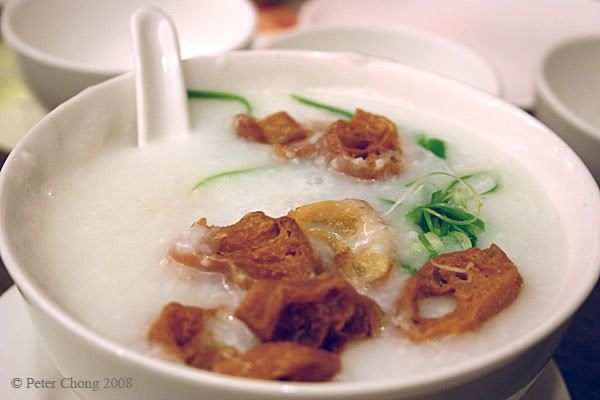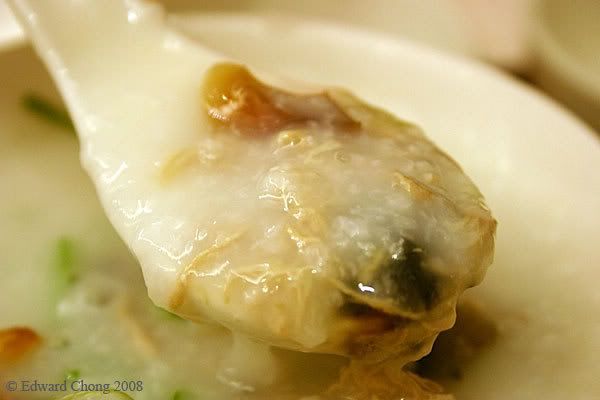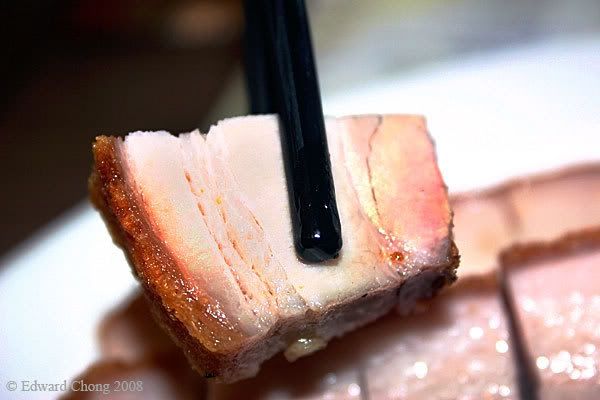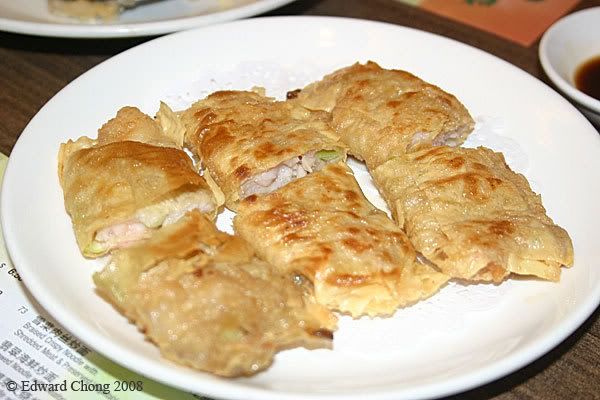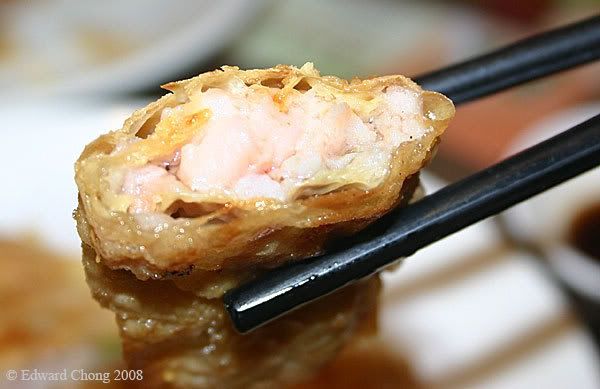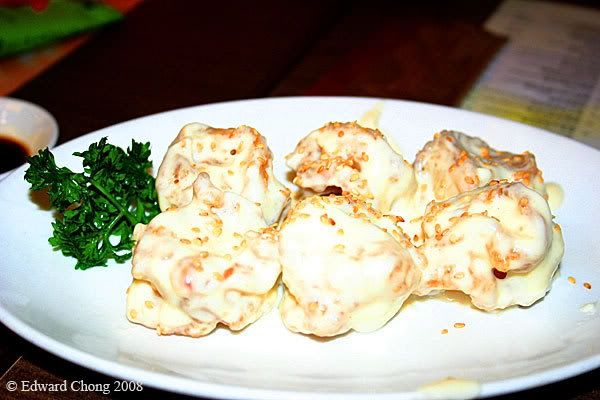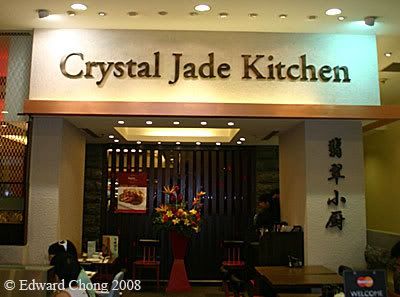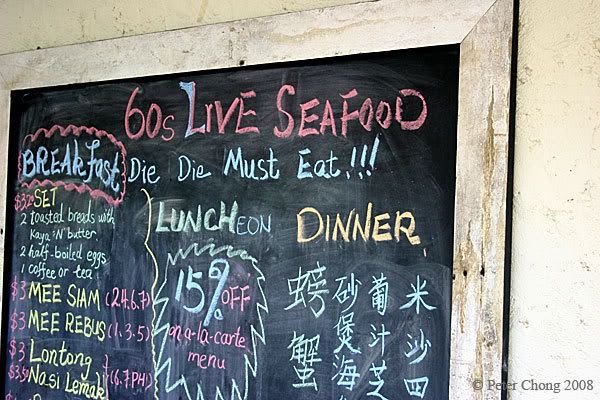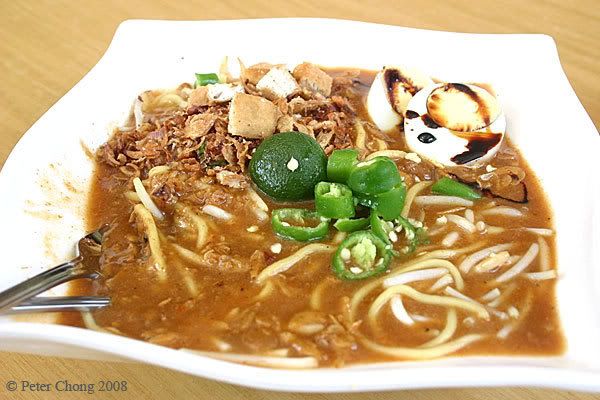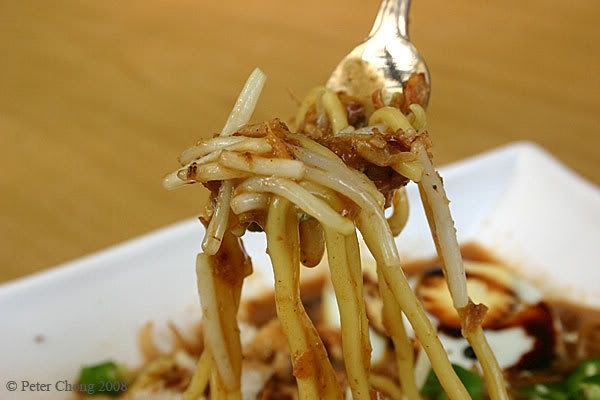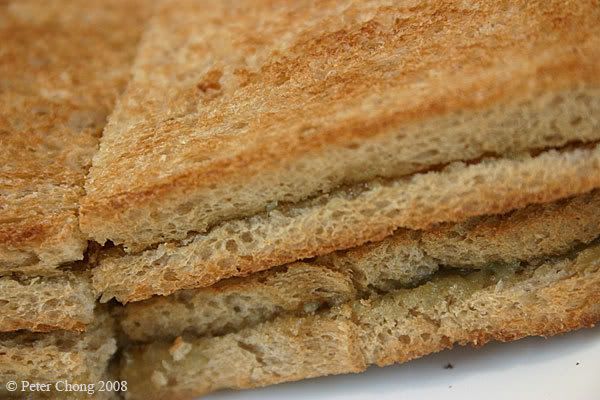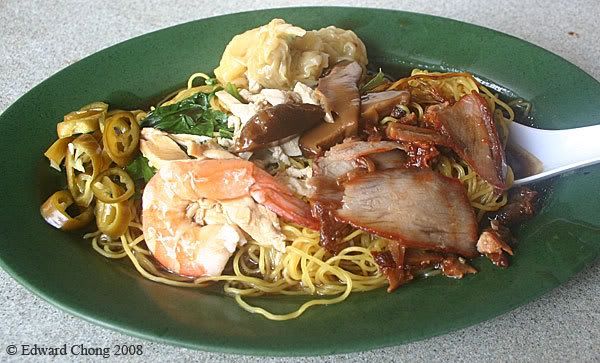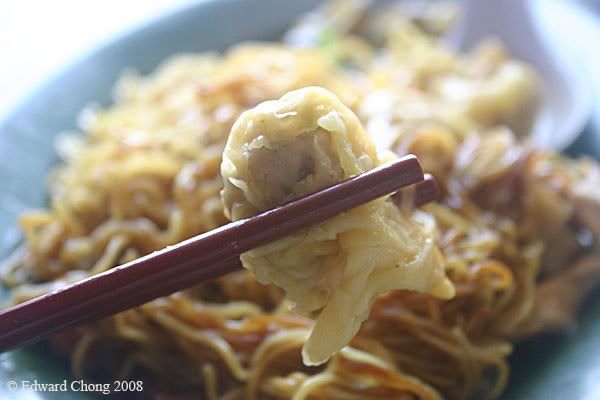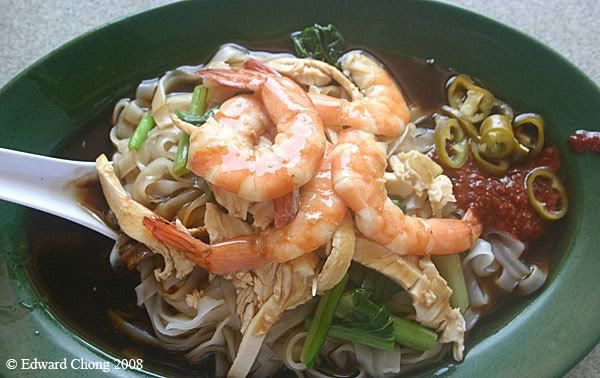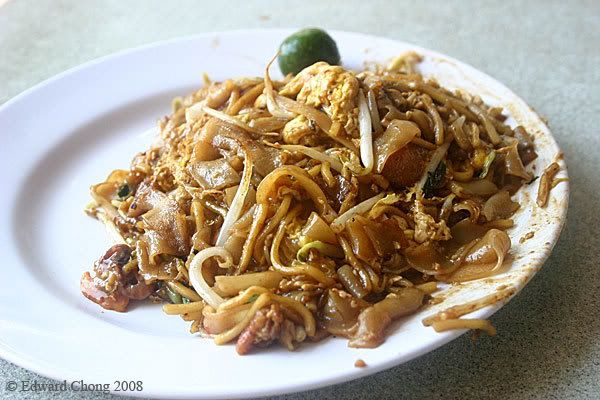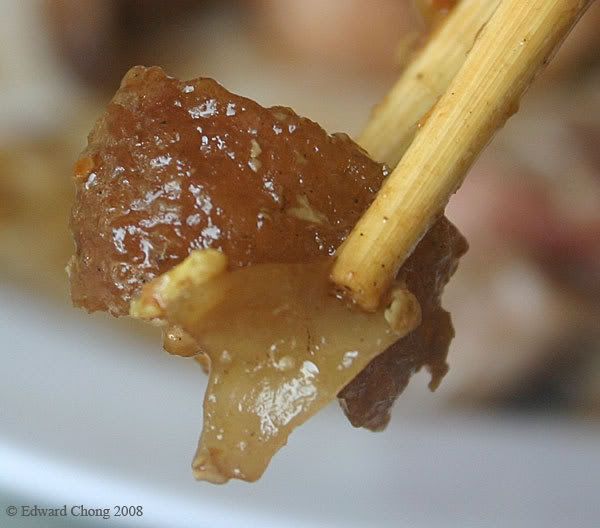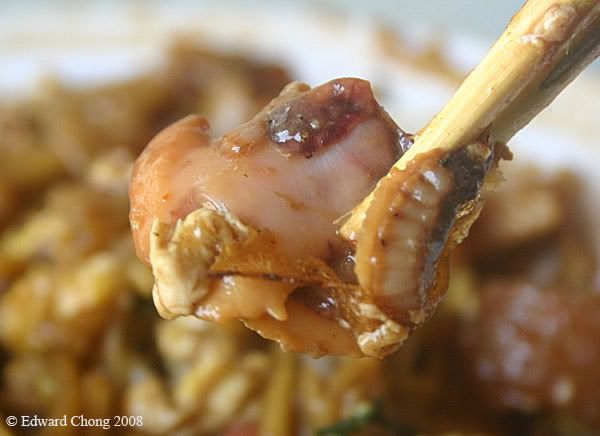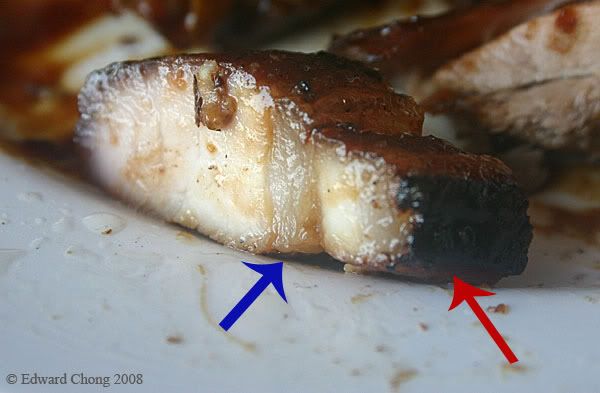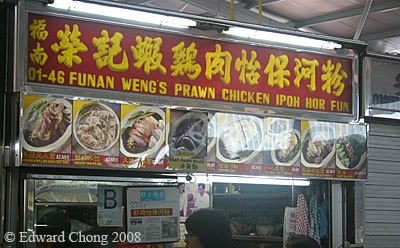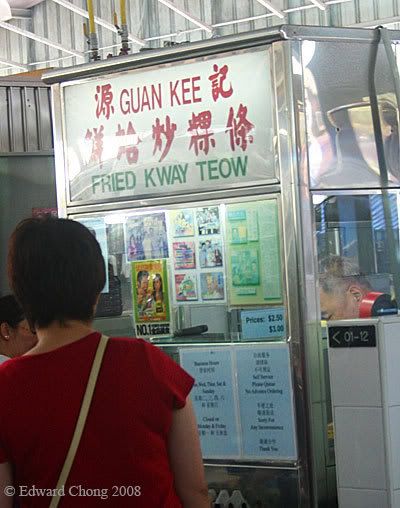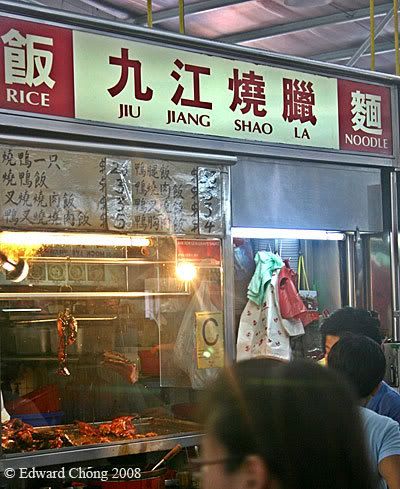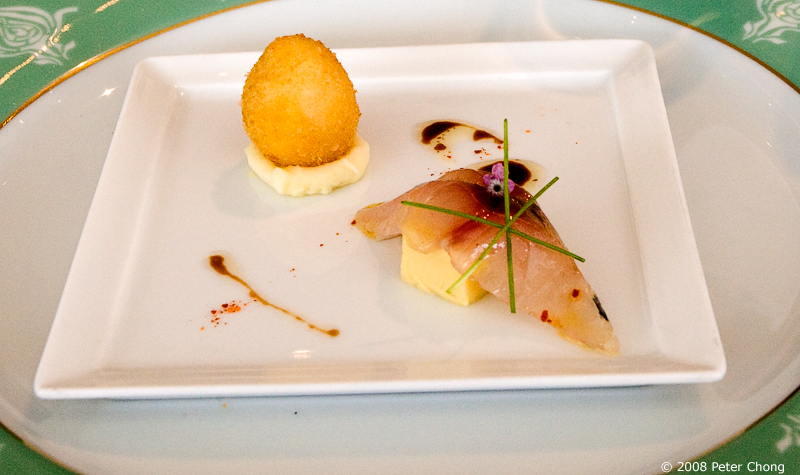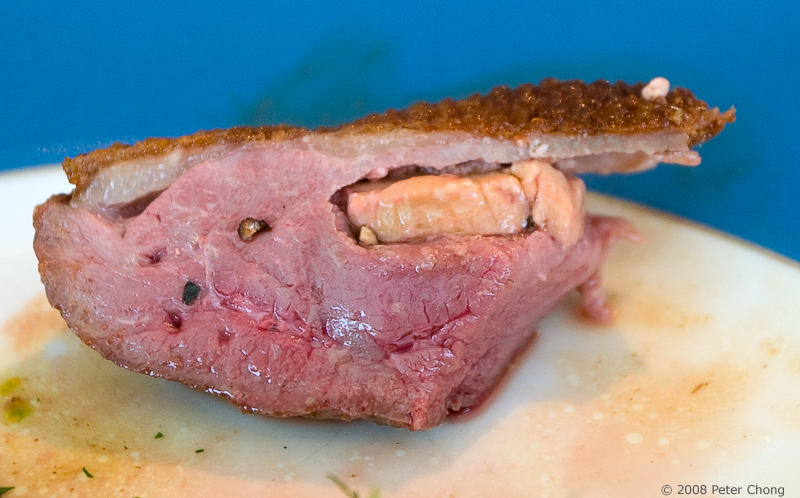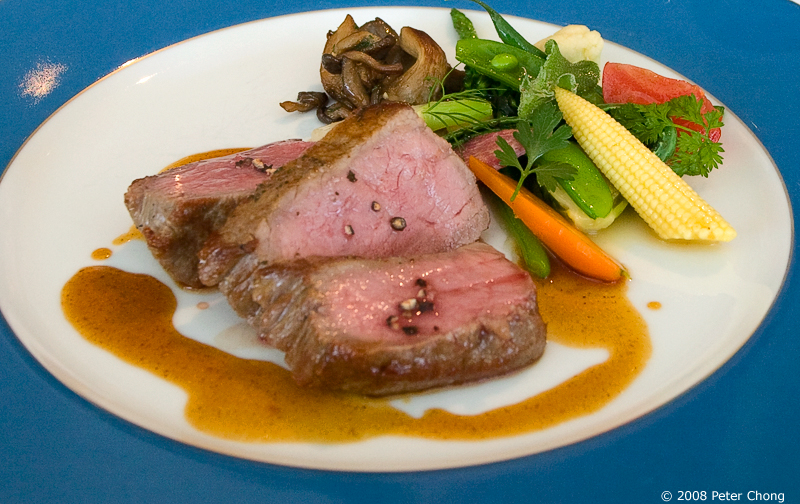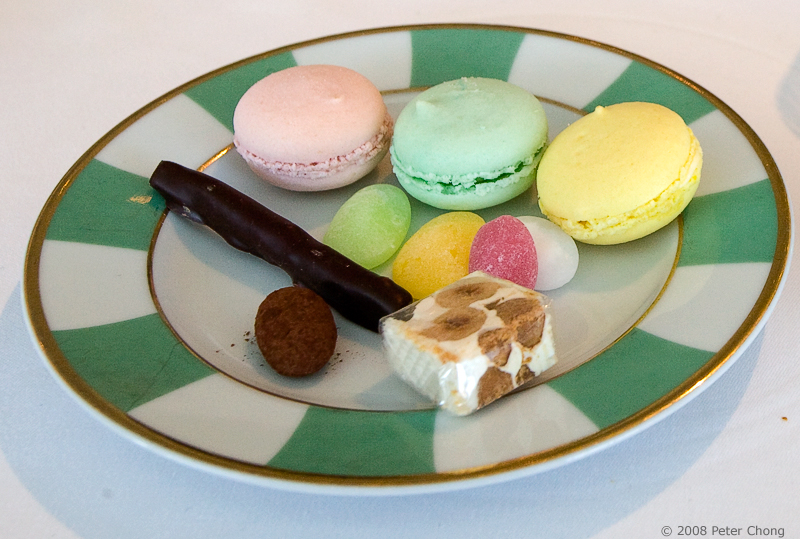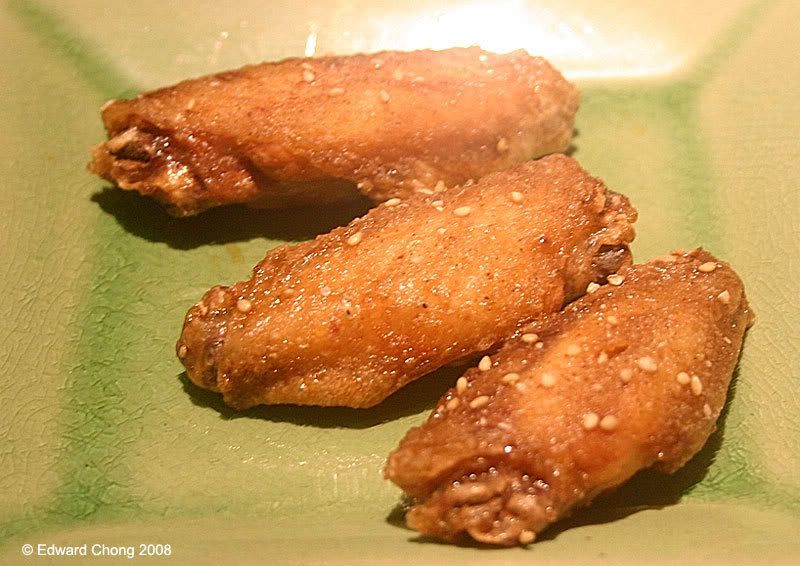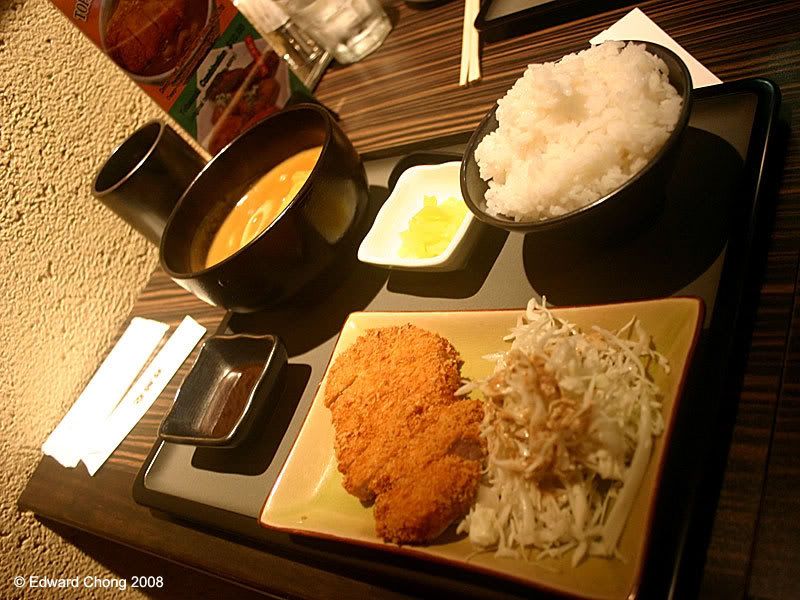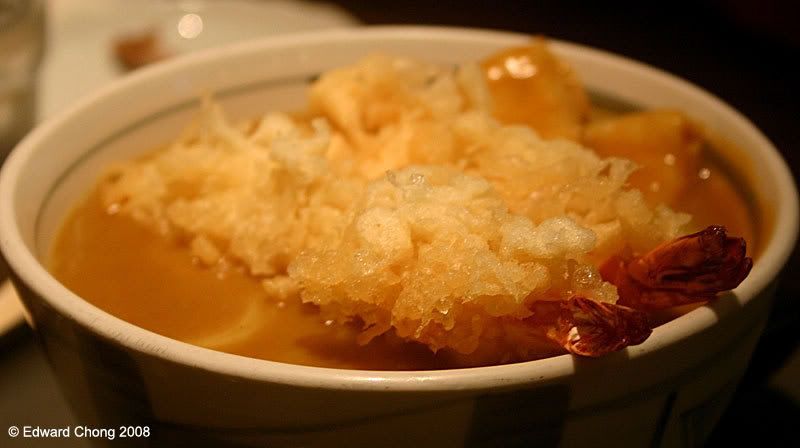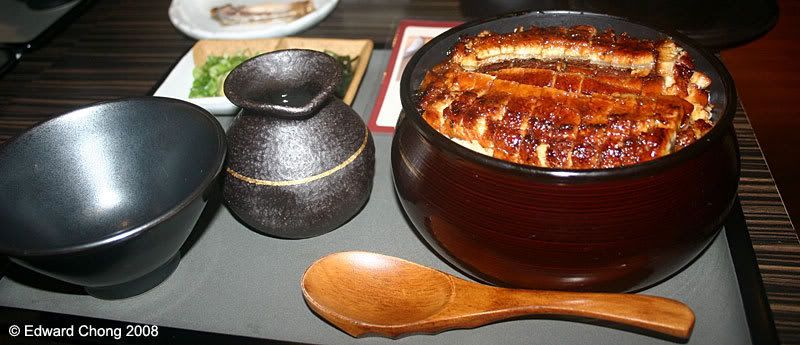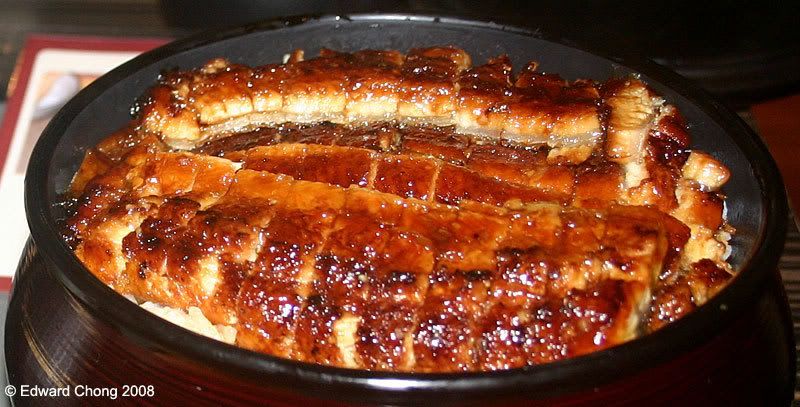Menya is in a somewhat difficult to find position, though once found, never forget. The cheerful waitresses wear T-shirts which says "Ramen is Art" already promises to be good.
All the noodles are hand made in-house (right in a small room inside the restaurant), and the soup used is made from scratch. This typifies the kind of obsession which characterises the Japanese culture. The owner is a retired Japanese an expat, who used to be President of the Ramen Society in Japan before he arrived in Singapore. After a stint in Singapore and Malaysia, he loved the region so much that he decided to open this shop.
One sign of a great ramen shop is that it does not serve anything else (other than side dishes) other than ramen, and another telltale sign of a serious ramen owner is that frequently no ocha is available - this Japanese green tea which is ubiquitious in Japanese restaurants, is not served. Menya is one such restaurant, as is Ken's Noodle House mentioned earlier. This is because one school of ramen artisan practitioners the ocha's taste tends to take the edge off the broth of a good ramen. Only cold water, soft drinks and beer is available.
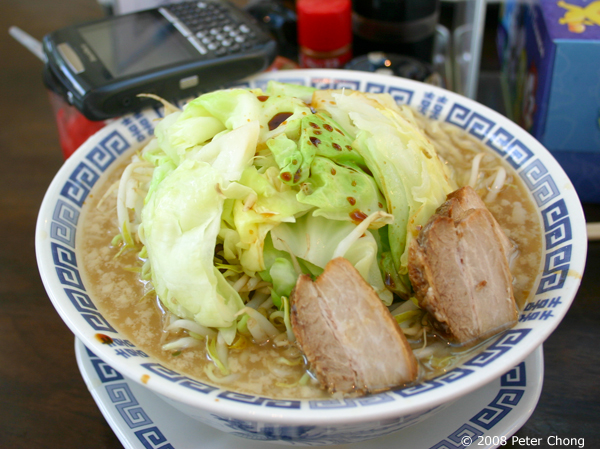
The signature ramen in Menya, in my view is the Shinjiro. Firstly, the dish impresses with the size. Served in a rather typical sized ramen bowl - which is rather huge, but usually the bowl is approximately half filled. But the Shinjiro was heaped full of ramen, bean sprouts, and cabbage, this was not the half filled bowl. So large is the ramen, that they offer a ladies version...half the noodles, but same amount of cabbage and bean sprouts, and a serving of ice cream is substituted for the smaller noodle size.
They serve several other types of ramen, ranging from black sesame to shoyu types but I did not find them to be worthy of special mention as is the Shinjiro. Curiously S$13 seem to be the standard price for a bowl of ramen in Singapore...all the other ramen restaurants mentioned in paragraph 1 are all priced similarly. This makes eating ramen more expensive in Singapore than Tokyo, where a typical ramen shop, even specialist ones, will dish you a nice, steaming bowl for about Y600 (now about US$6, or S$8). The more fancy places will charge Y900 or so.
The noodle in the Shinjiro is on the thick, much more alike the Chinese yellow mee (however, as it is a ramen, it is hand drawn rather than machine cut) than the usual thinner ramen and is served al dente. If you prefer softer ramen, it can be ordered. But for me, al dente is the only way to go.
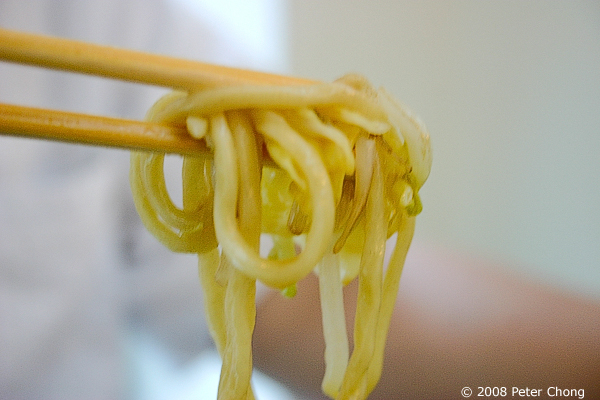
The broth was special. Thick, heavy, viscous (though not as viscous as one ramen I once had in Kyoto which had the consistency of lor mee rather than pork bone broth) and very tasty and not too salty. My usual complaint to tasty ramen broth is usually that it is very salty...typified by Tampopo's otherwise excellent stock. But the Shinjiro was well balanced...and frankly superb. Hints of pork, and an amazing fragrance was evident. The huge portion of vegetables was crunchy and very fresh.
It came with two rather small pieces of chashu. OK, its not small...each almost half the size of my 8707 Blackberry as can be seen in the picture, but they were so good, they felt small.
Japanese chashiu is also typifies the cultural tendency to perfection. The Japanese copy something so well, and take it on to another plane, that they make it their own. Ramen, a Chinese invention, is one example. The highest form we Chinese have taken the ramen to is the TanTan mee, which to me is unspectacular. But the Japanese have taken the ramen to new heights of art.
The chashu is the same. The Japanese chashu is also an artform which has deviated from its Chinese origins. While the Chinese version features a fillet which is barbequed with a sweet (usually colured red) sauce, caramalised into a crispy, slightly burnt crust while maintaining a juicy inside, the Japanese variety is typically made from pork steak cut, and usually roasted without any sauce. Menya claims their chashu is made by training received from the famous Japanese chashu masters at Chuka Soba Eguchi.
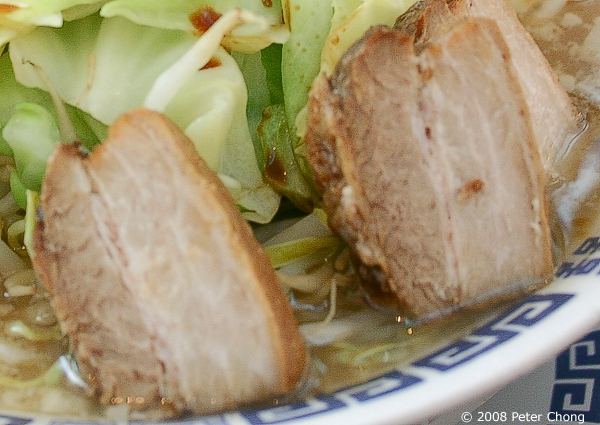
Shinjiro's chashiu was excellent...soft, tender, and full of flavour. The cut of pork came complete with finely marbled fat, as well as a thin layer within.

Half boiled eggs are available as a side dish, and it was quite good. An egg was halfed, and served on a plate and not inside the ramen...it came slightly chilled. The egg was perfectly cooked (though I prefer the slightly...very slightly raw, slightly runny insides of the egg which Tampopo does oh, so very well), and from the colour of the yolk, it appears to be from chicken which is partially corn fed. Corn tends to give yolk which are orangish in colour compared to a grain fed chicken's yellow yolk. Corn fed eggs are common in ramen found in Japan...but this one found in Menya seems to be from chicken fed a mixed diet, rich in corn.
We also ordered a plate of gyoza...5 dumplings were served in one helping.
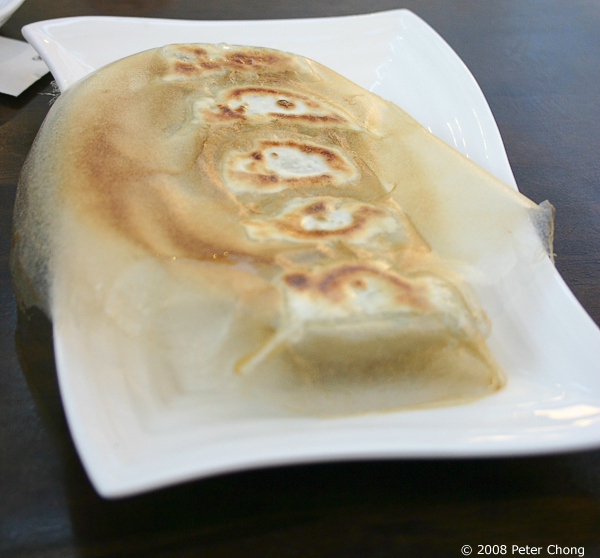
The gyoza was served very similar to what I have experienced in Japan...complete with what looked like a skin. This was a membrane formed when the small amount of soup used to cook the dumplings have boiled off. This had a fine taste, and the texture was akin to slightly crisped rice paper. The gyoza was not unusual in taste - good tasting, but nothing special.

Menya Shinchan Japanese Noodle Restaurant
30 Robertson Quay
#01-05 Robertson View
